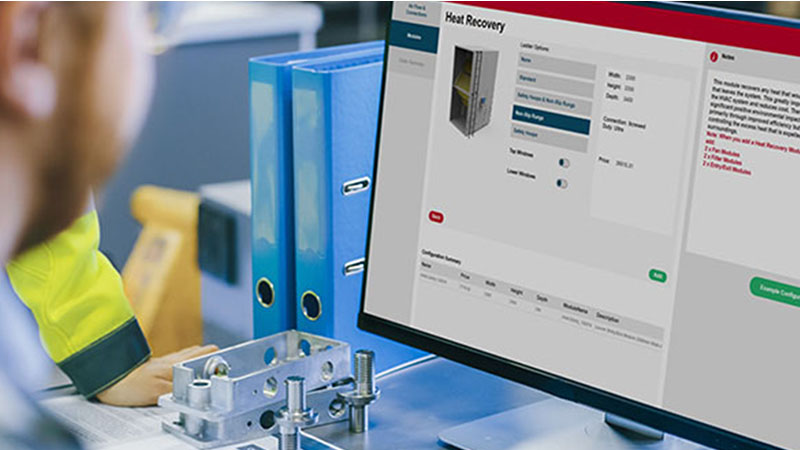Digital tools are revolutionizing the way manufacturers operate, offering unprecedented opportunities for efficiency, accuracy, and customer satisfaction.
In this blog, we explore how manufacturing companies, particularly those selling configurable products, can leverage digital tools and the many benefits they offer.
What is Digital Transformation?
Digital transformation in manufacturing refers to the integration of digital technologies into all areas of the manufacturing process, fundamentally changing how manufacturers operate and deliver value to their customers. This transformation involves leveraging technologies to improve efficiency, productivity, and innovation within the manufacturing sector.

Why is Digital Transformation Important?
For manufacturers of complex, configurable products, leveraging technology is essential to meet customer expectations and stay competitive. A recent study by Deloitte showed that companies with higher levels of digital maturity reported higher net profit and revenue growth.
Here’s how digital tools can help:
Integrate Data
Integration connects various systems within an organization, enabling automatic information sharing. This is crucial for successful digital transformation as it:
Improves Data Accuracy: Eliminates errors from manual data entry.
Ensures Up-to-Date Information: Keeps data current across all systems.
Facilitates Informed Decisions: Provides easy access to information needed for monitoring performance and making business decisions.


Streamline Sales Processes
Digital tools like Configure, Price, Quote (CPQ) simplify the sales process, ensuring only valid configuration options are available. They enhance customer experience and efficiency in several ways:
Configure: Product configurators remove the challenges of specifying complex configurable products. Guided selling features empower sales teams, distributors, and customers to configure custom products easily and accurately. 3D visualization tools communicate complex design details easily, enabling customers to understand product options as they configure.
Price: Real-time pricing and discounts calculated by product configurators allow customers to balance requirements and budget effectively.
Quote: Automatically generated and emailed sales documents save time for sales teams, allowing them to focus on new business.
Automate Engineering Processes
For manufacturers of custom products, digital tools can automate the preparation of engineering data, which is crucial for:
Reducing Bottlenecks: Automation speeds up the creation of drawings for quotes and orders.
Freeing Up Engineers: Allows engineers to focus on high-value tasks by automating repetitive design work.


Automate Business Processes
Automation of routine tasks enhances business agility, enabling teams to respond quickly to market changes. This is beneficial in:
Freeing Up Sales Teams: Automation reduces the need for manual quote approvals, allowing sales to focus on driving new business.
Enhancing Responsiveness: Automated processes ensure businesses can quickly adapt to market demands.
Overcome Skill Shortages
Digital tools help mitigate staffing challenges by automating processes and reducing the need for deep technical knowledge among sales teams. This:
Expands the Talent Pool: Makes it easier to onboard new employees.
Reduces Onboarding Time: Simplifies training for new hires.


Gain Insights from Data
Digital tools make it easier to access data, which informs business decisions. Integrations allow automatic data aggregation into centralized dashboards, providing insights into:
Performance Metrics: Real-time data on business performance.
Market Trends: Information to guide strategic decisions.

Glen Smith
CEO, DriveWorks Ltd
“Adopting Digital Transformation is one way of enabling any business to compete in a global market. Passing and translating data seamlessly internally and externally compresses process time, and reduces (and in some cases eliminates) errors. It allows mundane repetitive tasks to be automated and means that there is more time for humans to do what WE do best, interact, communicate and innovate.”
Digital Transformation Blogs
Learn more about how leveraging digital technologies can help you to create a more agile, efficient, and customer-focused business in some of our other Digital Transformation blogs.